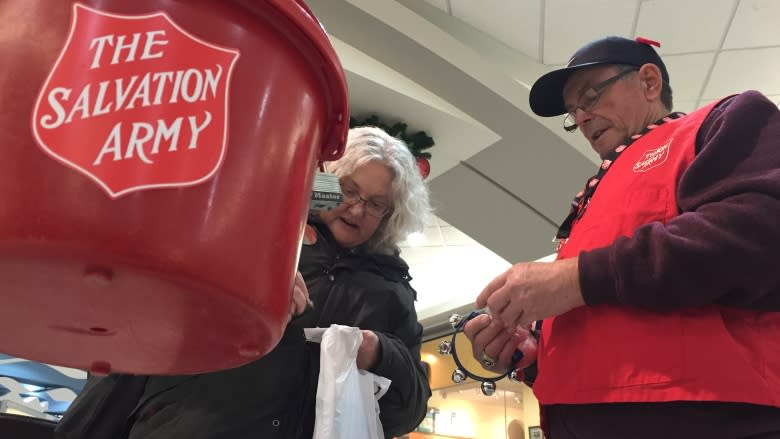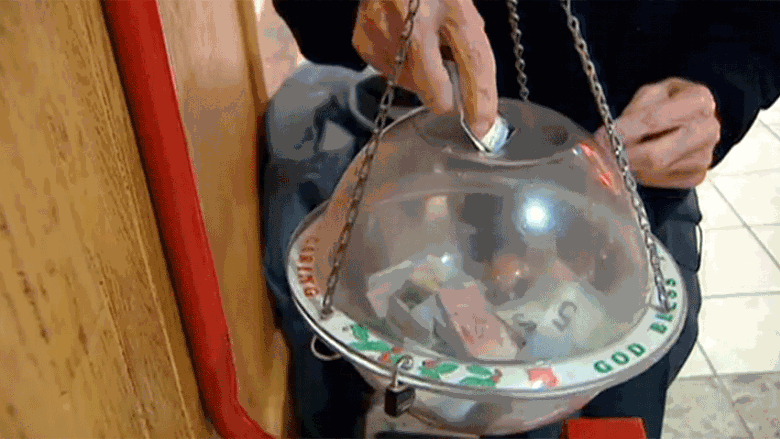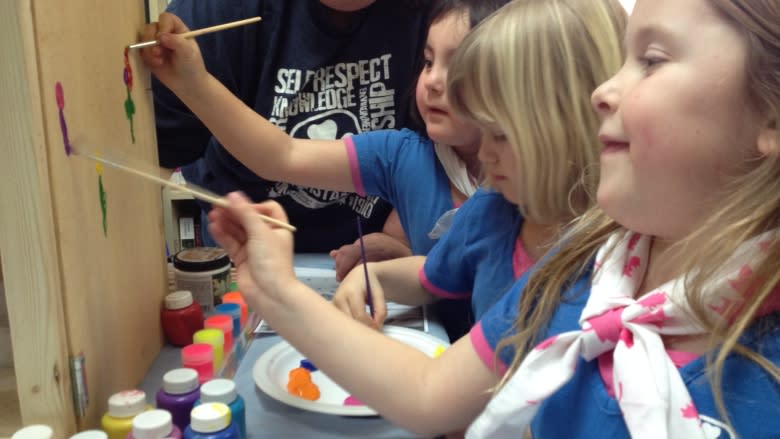Salvation Army, Girl Guides cash fundraisers flourish despite turn to plastic
Cash is losing a bit of its lustre — except when it comes to donating to the Salvation Army or buying Girl Guide cookies.
Cookie sales have remained strong and donations during the Salvation Army's kettle campaign have increased, despite people using their debit and credit cards more often.
"Our kettles see increased growth every year for the past ten years, that tells us that people are still out there carrying cash in their pockets," said Rhonda Harrington, a public relations and development director with the Salvation Army in the Maritimes.
The Salvation Army runs the kettle campaign every year before Christmas. Volunteers along with their kettles set up shop in local malls and retail stores and wait for passersby to drop money into the kettle.
The donated money is used to provide food, shelter and clothing to the needy.
Donations are 'a blessing'
In 2015 the kettle campaign in the Maritimes raised $1.93 million, and in 2014 it brought in $1.82 million, Harrington said.
That number has jumped dramatically over the last ten years or so. Back in 2006, the kettle campaign only took in about $90,000, she said.
That growth is despite a 20 per cent drop in how often Canadians have used cash since 2011, according to Payments Canada, a national organization responsible for the electronic movement of money in Canada.
Its most recent report on payment methods and trends shows that in 2015 debit and credit cards accounted for 47 per cent of all transactions in Canada. Cash accounted for 32 per cent of all transactions during that period.
"I think as a society as a whole we are going cashless, but I feel that for whatever the reason people are prepared...to make that donation, which for us is a blessing," Harrington said.
Cash for cookies
The sale of Girl Guide cookies also seems immune to the growing use of debit and credit cards.
On average Girl Guides in Canada sell 5 million boxes of cookies a year, bringing in tens of millions of fundraising dollars. The only form of payment the Girl Guides accept is cash.
"Buying cookies and supporting Girl Guides is such a feel good purchase we feel that we've kind of been cushioned a little bit from some of the impact of having a cashless payment that other organizations may have faced," said Sarah Kiriliuk, marketing and communications manager with Girl Guides Canada.
Change in strategy
Girl Guides has adapted its sales strategy. The youths do fewer door-to-door sales these days and instead set up shop in the entrances of big box stores.
"To replace the sales they may have lost going door-to-door, these are high volume areas so this enables the girls to sell more volume of cookies within a shorter period of time," Kiriliuk said.
Anne Butler, vice president of research policy and legal at Payments Canada, said the country is still not a cashless society.
"There is a certain natural tendency, I think, to still have cash with you. That's still very convenient, particularly at this time of year when we are thinking about our philanthropic opportunities," she said.
"It's very easy to use cash to donate and it's very hard to use a card."




